I saw the heart of the Ferrari Elettrica and how its iconic sound will be produced
Ferrari has an ingenious solution to that electric car sound problem on its upcoming EV
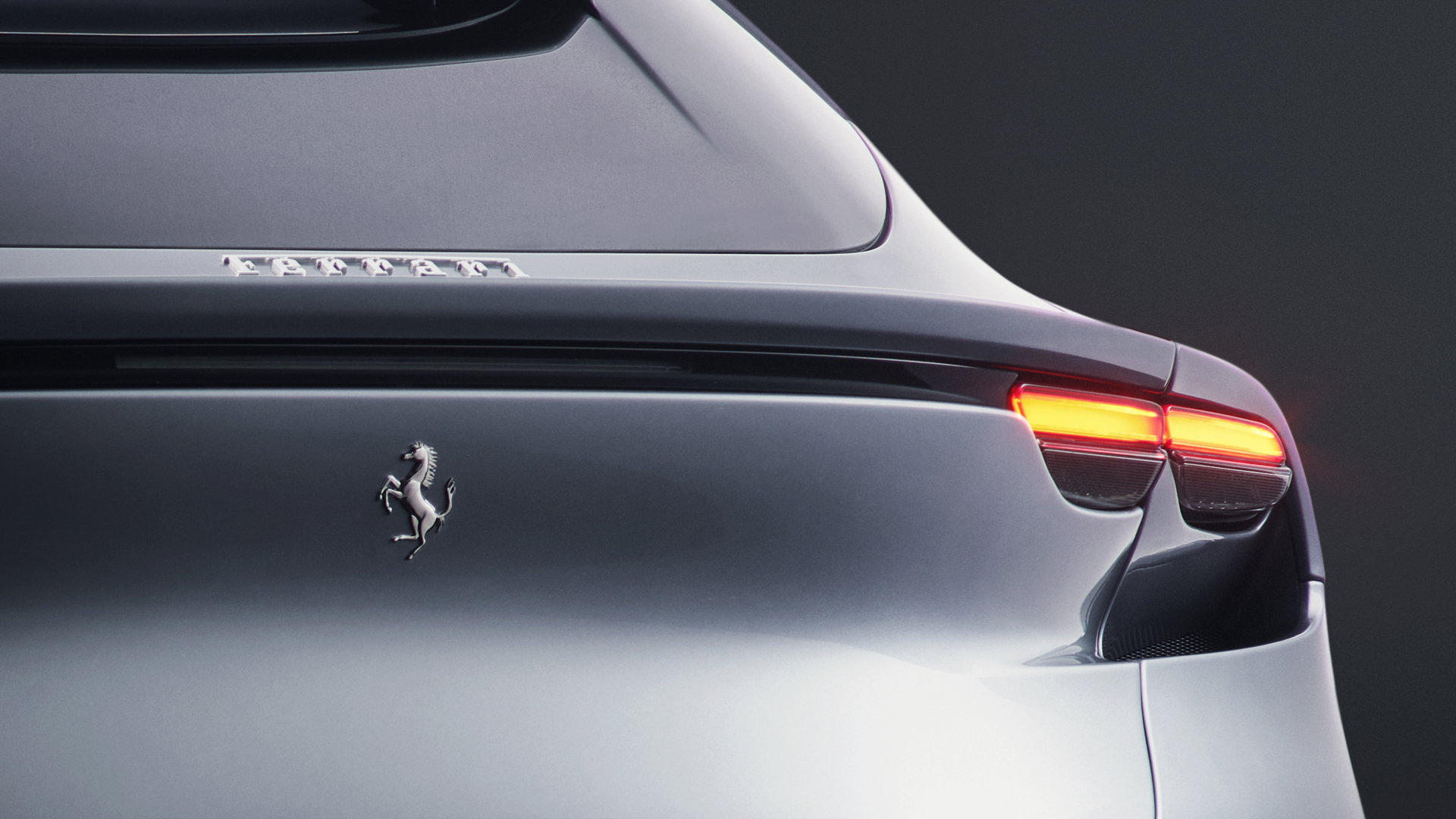

They say that a car is greater than the sum of its parts – the passion, the emotion, the spirit that it embodies, is more than just facts and figures. There's no brand where that's more true than Ferrari. So it's perhaps ironic that Ferrari's unveiling of its new Elettrica electric car focused on parts, rather than the overall design.
There's an autumnal chill in the air around Maranello, where the new Elettrica has been designed and will be built. An air of secrecy hangs over the Elettrica project, where I spent three days with Ferrari learning about what will make this car tick and how Ferrari is going to tackle its sound problem.
This isn't Ferrari's first foray into electric cars. Following an electrification plan, there's been an evolution from the 2013 La Ferrari through the SF90, and more recent Ferrari F80 and the new Testarossa offering hybrid solutions.
But Elettrica will be the first fully-electric Ferrari, and that presents a unique problem: with the high-pitched scream of a Ferrari engine being as distinctive as its design, how do you replace that in a car that's essentially going to run silently?
A unique sound solution
We've seen no end of gimmicks from car companies to inject sound into the electric driving experience. BMW turned to Hans Zimmer to compose a noise and lend a space-age feel to driving; Renault collaborated with Jean-Michel Jarre, while Mercedes has turned to Will.i.am for in-car musicality.
Ferrari told me that it didn't want to replicate the scream of its V12 or V8 engines, nor did it want to produce a synthetic sound like its rivals. Instead, the Ferrari team wanted to capture the real sound of the components of the car (pictured below), under load, and use that as the sound of the car.
The idea is that it's authentic rather than faked, and that there's a link between what the car is doing and the driver. To achieve this, Ferrari placed an accelerometer on the rear axle that detects the minutest change in how the car is driving.
Get all the latest news, reviews, deals and buying guides on gorgeous tech, home and active products from the T3 experts
That's the source of the data that becomes the background to the sound that will link the driver to the car. It will be amplified – with Ferrari using the analogy of an electric guitar – but we don't know how it's going to be rendered in the car interior itself.
It's not just going to be raw motor sounds: Ferrari has already confirmed that the high-pitch whine of a motor isn't what you'll get, but it's also staying schtum on exactly how that final sound will manifest itself.
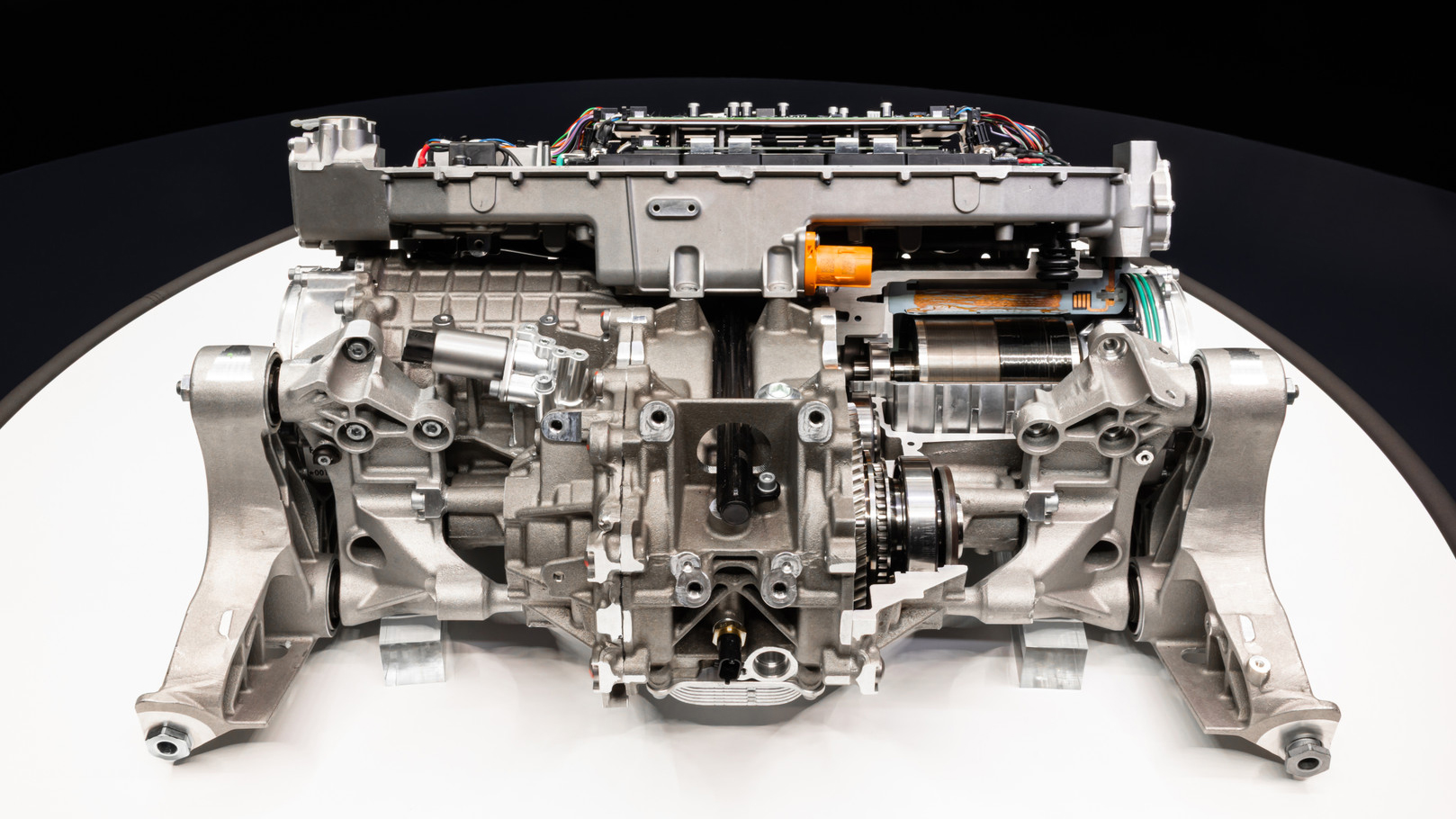
Talking at the unveiling of the Elettrica's core components, however, it was confirmed to me that the aim was for no lag between a change in driving state and an audible response and even that different left and right speeds could be interpreted through the sound.
At that point, Ferrari tightened: this is a three-stage reveal and it doesn’t want to give too much away. There's no clue as to what sort of external sound there might be and no more detail on exactly how that internal sound will be delivered.
Ferrari Elettrica isn't going to be a supercar
With the external design of the car remaining secret for now, we're left guessing exactly what form the new car will take. We know it's not a supercar, so if you were expecting a low-slung two-seater, then you'd be wrong. It's no coincidence that Ferrari references Purosangue frequently when talking about Elettrica.
What we do know, because it was previously confirmed, is that Ferrari has partnered with LoveFrom, a Silicon Valley company founded by Jony Ive (of Apple fame) and Marc Newson.
There will be a short overhang at the front and a proper back seat. With Purosangue proving to be popular (people just love buying SUVs), making the Elettrica practical is as important as making it drive like a Ferrari.
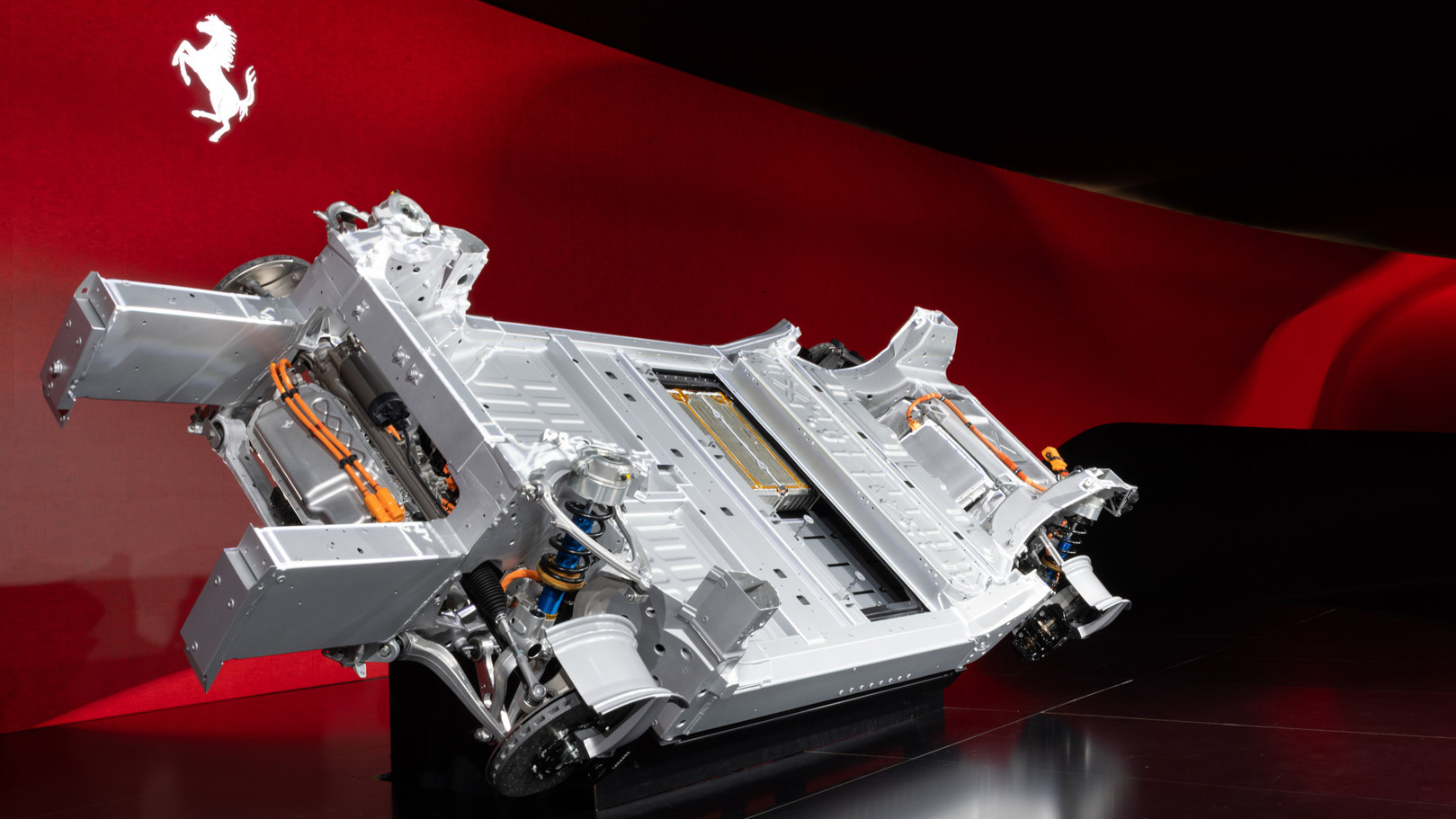
The active suspension that it offers is as much about comfort as it is about remaining in contact with the road. Ferrari has confirmed a 2960mm wheelbase and a weight of 2300kg.
But before you dismiss Elettrica, this is still a Ferrari and it will have over 1000hp, achieve 0-62mph in 2.5 seconds, and offer a top speed of 192mph. The range is said to be over 330 miles – but how is this going to be achieved?
Four motors, four wheel drive, four wheel steering
Ferrari is going to use a hollow aluminium chassis for the Elettrica, with an elasticised subframe at the rear of the car, housing the rear motors where most of the power comes from. The "elasticised" part means that vibrations from the rear motors will be damped by the chassis to increase the comfort – sound that might have previously been hidden by the petrol engine.
At the rear of Elettrica are two motors driving the rear wheels (which fit into the gap in the rear subframe, below), with a combined output of 620kW; the front axle will see a smaller pair of motors with an additional 210kW. The Ferrari Elettrica will offer All Wheel Drive, with independent control of each wheel to maximise performance and traction.
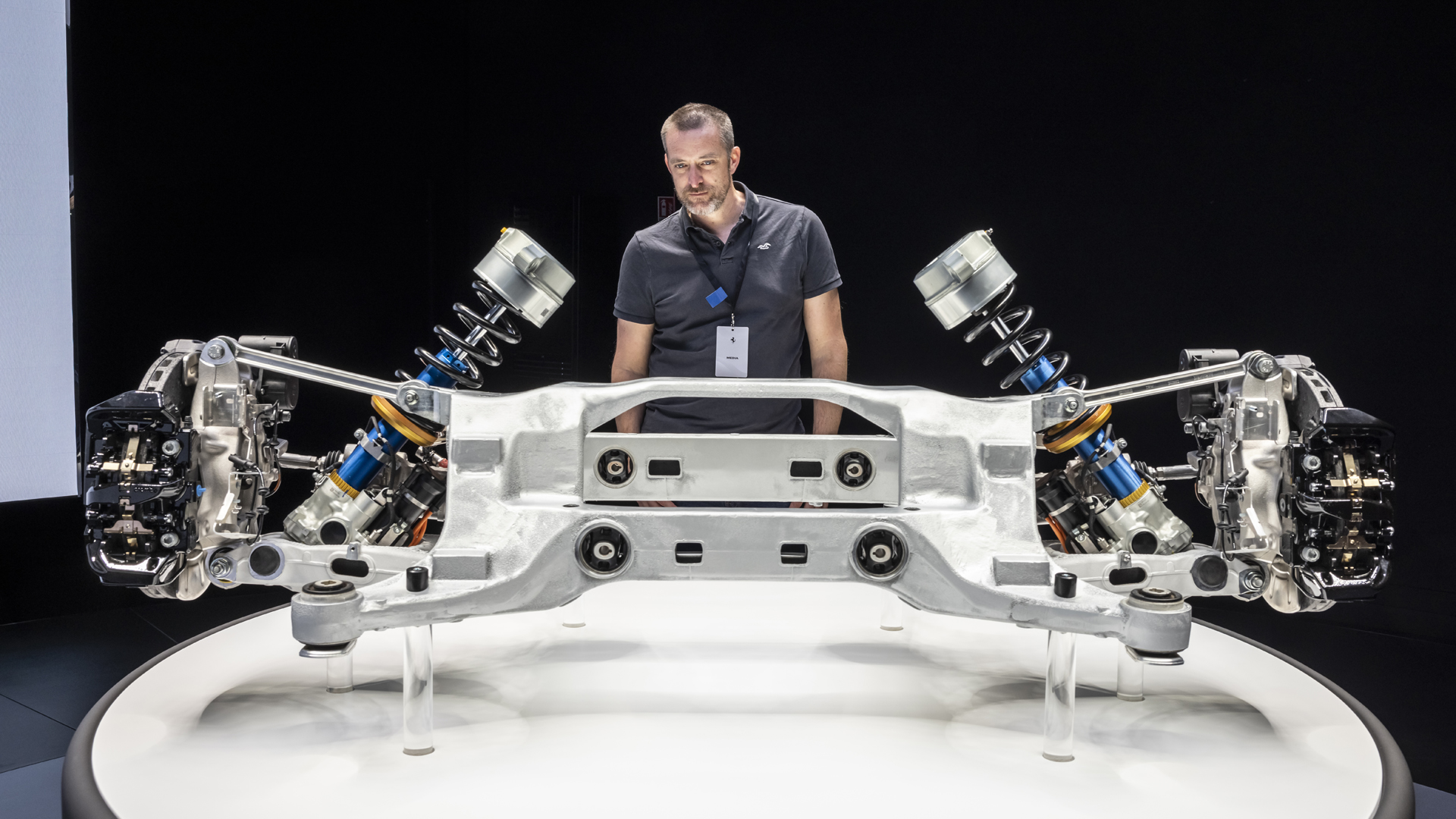
The rear motors will generate 8000Nm torque at the wheels, while the front can produce 3500Nm.
Everything has been custom-designed by Ferrari, it's not using off-the-shelf parts, with manufacturing taking place at its Maranello campus. If the front motors of the Elettrica sound familiar, that's because it's the same unit as fitted to the front axle of the Ferrari F80.
Active suspension – previously seen on the Purosangue – allows each wheel to be controlled independently, as does the steering. With all-wheel steering, Ferrari can change the angle of the rear wheels during manoeuvres to suit conditions, or to make low-speed turns tighter. Whether Ferrari will allow "crabbing", where the can move itself at an angle, remains to be seen.
A battery designed for energy density
The battery will sit in the floor, making up the central part of the chassis and making sure the centre of gravity is nice and low. It's a modular battery, the individual cells supplied by SK, but all the other manufacturing happens again in Maranello.
The 14 cells sit in 15 modules, all packed into the housing, along with all the cooling and electronics, which is then bolted into centre of the chassis. Ferrari has focused on energy density in this 122kW battery.
It's an 800V system, capable of 350W fast charging, with Ferrari telling me that you'll be able to get 70kW of power into the battery in just 20 minutes. That's exactly what you'd expect from a high-performance electric car, but what you might not expect is that it's designed to be replicable.
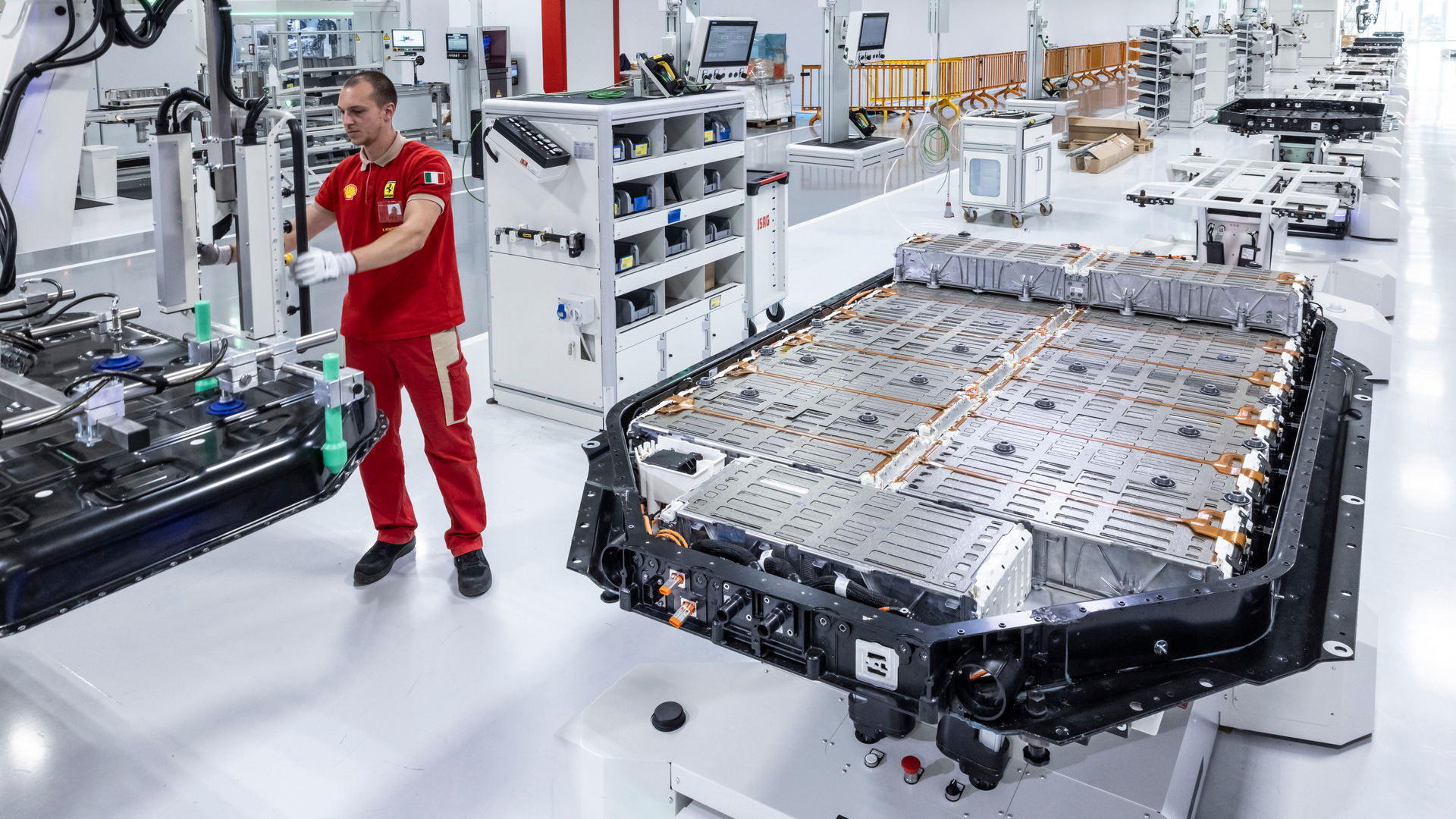
The modular design has been used so that the battery can be replaced as chemistry and technology change. The aim is to make sure that Elettrica can remain on the road forever and won't just expire as the battery decays.
This isn't going to be a replacement scheme for owners, rather that in 30 years' time the Elettrica could still be on the road using a different core from the battery that it was originally sold with.
For a luxury brand – where many of the cars are collectables – this is important to make sure that Elettrica retains value.
The paddles will be used like gears
Finally there will be plenty of control options for the driver, including something called Torque Shift Engagement. This is going to use the steering wheel paddles to unlock the torque and power in five stages. It's designed to replicate the experience of upshifting and downshifting through gears, with the feeling of engine braking when you downshift before a corner.
This isn't something that's typically done in electric cars: we've seen systems that adjust the level of regeneration using these paddles, but linking it directly to the driving is something new.
Exactly how this will work on the road remains to be seen. Like the sound that Ferrari is really excited about and the design (which remains a secret for now), there's still a lot to learn about the Ferrari Elettrica, beyond the core facts and figures.
The final reveal of the Elettrica's design and interior is expected in 2026.

Chris has been writing about consumer tech for over 15 years. Formerly the Editor-in-Chief of Pocket-lint, he's covered just about every product launched, witnessed the birth of Android, the evolution of 5G, and the drive towards electric cars. You name it and Chris has written about it, driven it or reviewed it. Now working as a freelance technology expert, Chris' experience sees him covering all aspects of smartphones, smart homes and anything else connected. Chris has been published in titles as diverse as Computer Active and Autocar, and regularly appears on BBC News, BBC Radio, Sky, Monocle and Times Radio. He was once even on The Apprentice... but we don't talk about that.
You must confirm your public display name before commenting
Please logout and then login again, you will then be prompted to enter your display name.